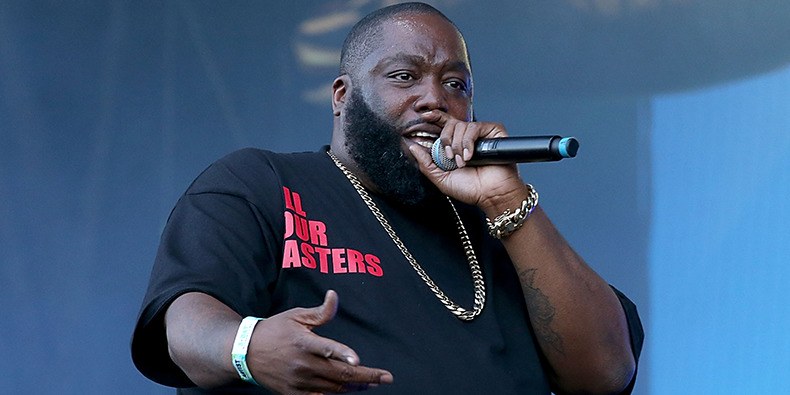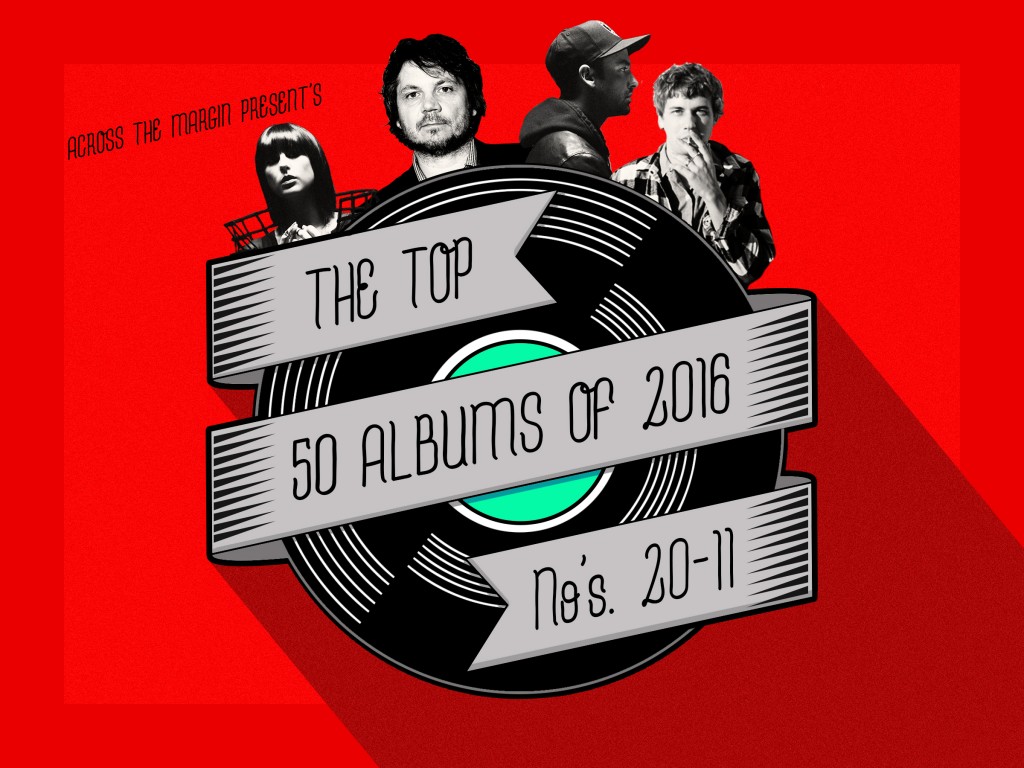by: Michael Shields
In April of 1997 Yo La Tengo dropped an absolute classic, an album that twenty years after its release remains entirely awe-inspiring…

It wasn’t until a few years after its release that I first got my hands on Yo La Tengo’s stunning classic I Can Hear the Heart Beating as One ((The album’s title is taken from a line in an unknown film according to Ira Kaplan who states, “I think it’s a nice, evocative title—it seems to mean a lot but it doesn’t really mean anything. It comes from a movie, but I’m not telling what movie. You’ll have to see it one day and say, ‘Eureka!'”)). Although late to the party, I fell hard for the album, and in looking back, I can still attest to the fact that it was one song in particular that roped me in. A foray in electronica for the indie rock band from Hoboken, New jersey, “Autumn Sweater” is as mesmerizing and beauteous a song as I have ever come upon. A track laden with anxiety — a theme song for the antisocial and anxious (“I tried my best to hide in a crowded room, it’s nearly possible”) — “Autumn Sweater” is a peculiar love song, one where two misfits slip away arm and arm, “me with nothing to say, and you in your autumn sweater.” But it is heartbreaking as well, as it contemplates the early days in a relationship, when everything comes so easy, and it questions if relationships are worth fighting for if something as simple as smiling doesn’t come as easy as it once did. These introspective and weighty ponderings on love and loss are delivered by singer/songwriter Ira Kaplan with a rich subtleness and an integral hint of desperation and reluctance, all while swaddled tightly within a layered and mosaic rhythm that is entirely hypnotizing. “Autumn Sweater” still has a hold on me to this day. Amazingly, it is just one of the numerous musical gems that are skewered across the masterpiece of an album that is I Can Hear the Heart Beating as One, released twenty years ago today.
Yo La Tengo ((Spanish for “I have it,” a name that was inspired by a baseball anecdote involving two Mets outfielders.)), was formed in 1984 by husband and wife duo Ira Kaplan and Georgia Hubley, who have in their lengthy career garnered heapings of accolades and critical acclaim, as well as a vast cult of admirers. In 1997, when I Can Hear the Heart Beating as One was released, Yo La Tengo were a firmly established act, coming off 1995’s widely-celebrated album Elect-O-Pura, but remarkably the band had much more in store. Within the sixteen tracks that span I Can Hear the Heart Beating as One, Yo La Tengo display a variety of unique musical styles (from krautrock to electronica to shoegaze and beyond), and in doing so lofted their already revered sound and enthralling musical meanderings to new heights. Not that Yo La Tengo drifted well outside their expertize mind you, as I Can Hear the Heart Beating as One is Yo La Tengo through and through, exhibiting the band’s singular finesse with overlaying guitar riffs and harmony-driven psych rock. But there was a newfound curiosity and exploratory temperament on the album that led to a sonic vivification of sorts. It’s astonishing to think that a band would be capable of crafting their finest album on their eighth release and thirteen years into their existence, but that is exactly what Yo La Tengo accomplished with I Can Hear the Heart Beating as One.
I Can Hear the Heart Beating as One commences innocently enough, as “Return To Hot Chicken” embraces the listener in a melodic nestle. It’s a short yet sweet introduction to the album that segues into “Moby Octopad,” a track vigorously powered by a thumping bass groove. The moment Ira’s delicate, yet potent, guitar wails are overlaid upon the songs deep-rooted beat, the album, even in its early stages, is in full swing. “Moby Octopad” is a rhythmic celebration of that sensation only love can invoke, where it feels as if there are only two people that exist in the entire world, when “locked in a kiss, outsiders cease to exist.”
“Sugarcube” is fuzzy, driving noise rock at its very finest. One of three singles released off the album ((The other two are “Autumn Sweater and “Little Honda.”)), “Sugarcube” is a triumphant rock song with a racing pulse and a charming theme of devotion. A hilarious, self-mocking video for “Sugarcube” was made featuring comedians David Cross and Bob Odenkirk, exhibiting Yo La Tengo’s wiry sense of humor. “Damage,” which follows, is a moody, atmospheric and haunting track, yet somehow acts also as a warm embrace, a port in storm after the “damage is done.” “Damage” is a testament to the tender affectivity of the album, as it proves that even the more foreboding moments of I Can Hear the Heart Beating as One have a tenderness to them. “Deeper Into Movies” builds to a fiery peak with zest, and this urgency permeates the entirety of the song as a melding of guitar wails and reverb fuse in a glorious crest of discord. The mayhem is cut aptly by “Shadows,” a pacifying release where drummer/ vocalist Georgia Hubley softly sings about weathering love’s heartaches in an earnest and heartfelt ballad, and the song is as captivating as it is elegant.
“Stockholm Syndrome” is, relatively speaking, the most straightforward rock song on I Can Hear the Heart Beating as One, and notably the first Yo La Tengo song sung by bassist James McNew. With hints of 60’s era folk, “Stockholm Syndrome” is laced with an undercurrent of optimism, as McNew croons, “your heart is broken / and the doors are open / as you’re hoping to be / there’s brighter places to see.” The aforementioned “Autumn Sweater” acts as both the midpoint and the unmitigated peak of the album, a high water mark that accentuates all that came before it, and prepares the listener aptly for the remainder of the ride with its cathartic introspection. “Little Honda,” the first of two covers on the album and a thrashing take on a Beach Boys track off their 1964 album All Summer Long, is a shot of adrenaline to the heart following the consuming bliss of “Autumn Sweater.” “Green Arrow” is a tender ambient instrumental, where each twangy pluck of Ira’s pedal steel guitar grows increasingly affecting, and it acts as the perfect setup for the alt-country romp of “One PM Again,” where Ira reassuringly sings “and if we don’t leave today / there’s no hurry anyway / I’m on the road here, safe at home here / So let’s make sure we’re sure / that it is reeling, and I’m feeling / let’s not make any sudden moves.”
“The Lie And How We Told It” is as soft as a whisper, but it still holds in it the power to be all-consuming. Upon a soft lush palette, Ira’s graceful guitar licks take the listener on a soaring journey, an engaging moment of serenity before Yo La Tengo’s playful take on bossa nova in “Center of Gravity.” This lighthearted romp is a reminder, once again, of the capability of love to make one feel fully alive, so much so that you “can’t feel both feet on the ground.” “Spec Bebop” is an enterprising krautrock excursion. It’s a ten minute intense meandering that is gripping and exemplifying of how bold of a statement Yo La Tengo were making with I Can Hear the Heart Beating as One, as few sonic stones are left unturned throughout the course of the album. “We’re An American Band” is psych-folk rock that while gentle, still maintains the album’s momentum, and builds purposefully to a passionate conclusion. “My Little Corner Of The World” is as ideal of a closing track on an album that can be found. An understated take on Anita’s Bryant’s 1960 love song sung by Georgia Hubley, “My Little Corner of the World” is the necessary soft-landing following the eclectic and entirely absorbing expedition of I Can Hear the Heart Beating as One. It allows one a chance to catch their breath, and to contemplate the grandeur of all that came before.
Looking back, decades later, it’s remarkable how I Can Hear the Heart Beating as One not only stands the test of time, but it manifests itself remarkably ahead of its time as well. The fusion of distortion-rife pop, twangy country, mesmeric electronica, and audacious krautrock, display a band testing the boundaries and possibilities of pop rock, and in doing so redefining the genre. I Can Hear the Heart Beating as One finds Yo La Tengo teetering a fine line, striking a balance between thunderous rock and delicate tranquility. Thematically, the album sways toward the melancholy, but even with this in mind, I Can Hear the Heart Beating as One offers up the promise of a brighter tomorrow, and acts as a testament to the power of love. In subsequent years, Yo La Tengo would go on to release a slew of excellent albums, and have continually challenged themselves and modified their sound. But I Can Hear the Heart Beating as One stands out amongst their stout catalogue and will forevermore be “Exhibit A” in the case for Yo La Tengo’s consideration as the greatest indie noise rock band of all time.





